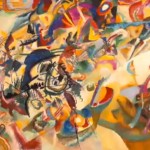A brilliant Grace Jones and David Bowie mashup.
Category: Song of the Moment
-
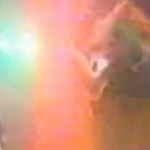
Riff Raff
When I was in San Francisco a couple weeks ago, Michael introduced Girish and me to a whole pack of Bay Area bloggers and film folk, several of whom, I was happy to discover, were eager to discuss my “Great Guitar Songs” project. It’s kind of a music geek’s wet dream, really. Just deciding which three Led Zeppelin songs to include, I’ve discovered, can kill, like, 30 or 40 minutes if you pose the question to the right coworkers.
Last weekend, when Joanna and I drove down to Chattanooga, we listened to nothing but the first draft of my 5-disc compilation. She was quick to point out a glaring omission, God bless her — “Barracuda” by Heart. I also realized that I’d taken my fondness for ’60s garage rock a bit far and needed to trim some of the fat. Also, we both agreed the collection needed some AC/DC.
Here’s something I’ve learned about AC/DC, though. Apparently they’re one of the final holdouts of the iTunes era. (I assume this goes hand-in-hand with their weird distribution deal with Wal-Mart.) None of my regular sources — eMusic, Amazon, or iTunes — sell AC/DC songs, so, instead, I drove over to Knoxville’s music mecca, The Disc Exchange, and plunked down $7.99 for a brand new copy of Powerage (1978).
Here’s something else I’ve learned about AC/DC. They rock. I mean, I’ve known AC/DC rocks since I was 9 years old and my friend Steve put Back in Black on his turntable and dropped the needle on “You Shook Me All Night Long.” What surprised me, though, is that they still rock, long after the brand of heavy metal they discovered was made into a joke by ’80s hair bands, and long after I “outgrew” my fondness for early metal.
I bought Powerage rather than one of the other, more obvious choices because it includes “Riff Raff,” hands-down my favorite AC/DC song. There’s much to love about this song — the opening crescendo, Angus’s riffs, the driving 8th-note bassline, the unimpeachable beauty of a 3-chord song — but I developed my crush on it after listening to Mark Kozelek’s What’s Next to the Moon for the 15th or 20th time. Moon is an entire album of AC/DC covers, all culled from the Bon Scott era, and all given the full-on Kozelek treatment: soft, acoustic renditions, lovingly and sweetly sung. I’ll be damned if Kozelek doesn’t turn Bon Scott into a kind of Woody Guthrie or Hank Williams — a simple man capable of transforming simple desire and simple language into heartbreaking folk poetry. Check out Kozelek’s version of “Riff Raff.” Both versions, I’ve decided, are going on my nephew’s CDs.
-
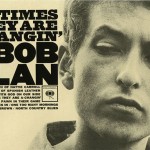
Seven Songs
The Seven Songs
- “Boots of Spanish Leather” by Bob Dylan
- “Inside a Boy” by My Brightest Diamond
- “Spirits (Having Flown)” by Bee Gees
- “A Letter to Both Sides” by The Fixx
- “Elegie in C Minor, Op. 24” by Gabriel Faure
- “Tel Que Tu Es” by Charlotte Gainsbourg
- “Revolution Earth” by The B-52s
Bob Dylan
Professor Fury has tagged me with the “7 Songs You’re Into Right Now” meme, which is good because I’ve been looking for an excuse to write about how it’s only now, thirty years after I bought my first pop/rock record, that I’ve finally entered my Bob Dylan phase. I dismissed Dylan for so many years, mostly because of that voice, which I disliked to such an extent that it fooled me into thinking his songs lack melody. I was wrong on both accounts — about the voice (more on that in a second) and the songs, which are, on average, so impossibly good that I actually feel a bit overwhelmed by it all. I could easily name seven Bob Dylan songs that I’m into right now and be done with this damn post, but my wine glass is still more than half full, and, besides, that wouldn’t be much fun, now would it? And so I give you only “Boots of Spanish Leather” from The Times They Are A-Changin’, written in 1963, when Dylan was all of 22 years old. Such a lovely lyric and melody — better than anything crafted by many great songwriters over the course of a lifetime — but what kills me is the vocal performance, which makes the song sound like it’s a hundred years old.
My Brightest Diamond
To the short list of “Darren’s Dream Jobs” you can now add “Shara Worden‘s Bass Player.” My Brightest Diamond’s second album, A Thousand Shark’s Teeth, will reach American store shelves on June 17th, and at this point I’m counting the days. If the first song from the album, “Inside a Boy,” is any indication, it won’t be a great departure from Bring Me the Workhorse, which is just fine by me. Joanna and I have played that album to death. This song is all about the bass line, which is deliriously syncopated and muddied with fuzz. Please play at high volumes.
Bee Gees
If at any point over the past three months you had found yourself in a room with me and a piano, chances are you would have already heard me ramble on about how great a song “Spirits (Having Flown)” is. No, really. You also would have heard me play and sing it. I can’t seem to stop. The lyrics are godawful, even by Barry Gibb standards, and this is one of the few instances where a disco-era Bee Gees song is hindered by the production. (The woodwinds in the bridge disappoint me every time.) But the song is amazing. That each verse includes three different Major-7 chords is enough to earn my affection, but what pushes “Spirits” into the realm of pop music brilliance is the melody, which uses those sevenths — even landing on them at the ends of phrases. (A great example is the short pause after “We go alone” around the 43 second mark. He finishes the phrase by singing an E over an F-Major chord.) “Spirits” also shifts constantly from minor to major tonalities. I especially like the G-Minor to F-Major to G-Major move in the chorus (from 1:37 to 1:43), which is followed immediately by a short key change and a complex but effortless-sounding transition back to the verse. Top-notch songwriting.
The Fixx
Joanna’s new car came with a free trial of XM radio, and I’ve been really enjoying FRED, which plays nothing but New Wave, Post Punk, and British pop of the late-’70s and ’80s. I never imagined I’d hear Husker Du and The Damned on the way to the grocery store. I tend to remember only the tinny, mechanical drumming of those pop records, but FRED has been a fun reminder of how interesting so much of the guitar playing was. Think of the Edge’s playing on War, for example, especially on “Drowning Man.” Or Johnny Marr on The Smiths’ records. Lately, I’ve been spending a lot of time with the Greatest Hits of The Fixx. Jamie West-Oram has been their guitarist for nearly 30 years, apparently, and he’s a wonderfully tasteful and inventive player. “A Letter to Both Sides,” as I’ve learned while writing this post, was originally included on the Fletch soundtrack, which only adds to its awesomeness as far as I’m concerned. Aside from having the lamest 15-second intro you’re likely to hear in some time, it’s a fantastic song that’s built around a rhythm guitar part that wouldn’t be out of place on a Nile Rodgers record.
Gabriel Faure
Fifteen years ago, when Joanna and I were just beginning to know each other, she invited me to join her in a practice room at the Florida State Music School. I was finishing up my one year as a failed music composition major there, and she was taking cello lessons for fun. We hacked our way through some piece together for about fifteen minutes then spent the next two hours talking. I’m not sure why we never tried playing together again — not seriously, at least. She’s working on Faure’s “Elegie in C Minor, Op. 24” right now, and last week I decided to join her. We’ve only made it through the first twelve measures so far, but give us time. The cellist in this recording is Steven Isserlis, and the pianist is Pascal Devoyon, from Faure: Complete Cello Works.
Charlotte Gainsbourg
On the I’m Not There DVD, Todd Haynes admits that when he finally met Charlotte Gainsbourg in person, he’d never wanted so badly to be straight. I’ve listened to her album, 5:55, more than any other over the past three or four months, and this song, “Tel Que Tu Es,” never fails to make me . . . what’s the word? . . . horny. It’s an incredibly sexy song, right? All that breath in her voice, and the unapologetically lush string arrangement? Plus, I can’t not imagine Charlotte’s face when I hear the song. Lust at first sight.
The B-52s
And finally, I end with a joke — not the song, which was always my favorite of the B-52s’ comeback singles, but the reason it’s on my mind these days. But first, two warnings: One, I know this is a “you had to be there” kind of joke, and Two, of the forty people who read this site, maybe only two or three will get the reference. So, Joanna and I are driving around one night and “Revolution Earth” comes on the radio. At about the 30 second mark, Joanna, without looking up from her magazine, says, “Is this the song Gaeta was singing after they cut off his leg?” I almost wrecked the car I was laughing so hard.
I warned you.
Edit: A little more context for the joke.
-

Vermicide
A recent conversation while driving home from Lowe’s:
“How is it possible for a human voice to make that sound?”
“I think it’s Mars Volta. . . . Rush for the new millennium.”
“It’s like there has to be one of those guys every generation. It’s just wrong.”
[pregnant pause]
“But you dig the song, right?”
“Absolutely. Don’t you?”
“I haven’t changed the station yet. . . . You just like the angst.”
“Yep. That’s why most of the music you like sucks. Not enough angst.”
“Well, most people outgrow angst, like, after puberty.”
“Whatever.” -

By the Time It Gets Dark
First great show of 2007: Lambchop and Yo La Tengo. Unfortunately, YLT’s last visit to Knoxville was memorable for reasons having little to do with the amazing music that was played that night. But they came back anyway, God bless ’em, and this time they played to a large and rapt audience at the Bijou. They closed the show with this cover of the old Sandy Denny song, “By the Time It Gets Dark,” and I’ve probably listened to it a hundred times since. And I have to mention this: thanks to the kindness of a friend, I not only got to hang out with Georgia for a while and drink a beer from the YLT stash; I actually drove Georgia and Ira’s van. That smell you smell is indie rock cred. I reek of the stuff.
-
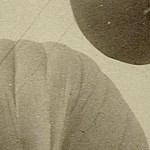
Mix: Needle Drops
Ever since Mr. Blonde carved up that guy to the sound of Stealer Wheel’s “Stuck in the Middle with You,” a certain brand of American “indie” cinema has been defined (and marketed) as much by its “needle drops” (the use of pre-existing music) as by its mode of production and distribution. Think “Sister Christian” in Boogie Nights, “Making Time” in Rushmore, and “The Seeker” in American Beauty. The practice hardly began with Quentin Tarantino and Zach Braff, of course. The American filmmakers of the ’60s and ’70s were/are especially good at it. “The End” in Apocalypse Now. “Layla” in Goodfellas. Assemble a small group of even casual film watchers, give them ten minutes, and I bet they could put together a list of a hundred more examples.
This mix began with a single iTunes download. My all-time favorite needle drop accompanies my favorite sequence in what also happens to be my favorite film, Andrei Tarkovsky’s Mirror. Midway through the film, Tarkovsky interjects a strange sequence in which a party of Spanish immigrants tell stories of the Civil War and bullfighting. (It’s all part of his on-going meditation on the meanings of nostalgia.) Tarkovsky augments their stories with found footage of Spaniards fleeing the war, building his montage to a crescendo with the sounds of frantic crowds and squealing trains and ending on a shot of a young, frightened girl who stares directly into the camera. And then silence. And a cut to more found footage — this time of early Soviet ballooners and a ticker-tape parade. I always cry at the precise moment Tarkovsky fades in the sound of Pergolesi’s “Stabat Mater, No 12: Quando corpus.”
So what we have here is a collection of some of my other favorite needle drops. Some are meaningful to me because of their placement in a film I adore (“The Rhythm of the Night” from Beau Travail, for example). Others are memorable only because they are unexpected surprises in an otherwise disappointing film (“You Know, You Know” is about the only thing I loved about Egoyan’s Where the Truth Lies.) Regardless, each of these songs/pieces is now inextricably bound in my memory to a particular scene and the emotions it evokes.
- “Golden Hair” by Slowdive
Mysterious Skin (2004) dir. Gregg Araki - “Safeway Cart” by Neil Young
Beau Travail (1999) dir. Claire Denis - “Die Walkure: Orchestervorspiel” by Richard Wagner
Birth (2004) dir. Jonathan Glazer - “I Put a Spell on You” by Screamin’ Jay Hawkins
Stranger than Paradise (1984) dir. Jim Jarmusch - “You Know, You Know” by Mahavishnu Orchestra
Where the Truth Lies (2005) dir. Atom Egoyan - “Trouble” by Cat Stevens
Harold and Maude (1971) dir. Hal Ashby - “Gayane Ballet Suite” by Aram Khachaturyan
2001 (1968) dir. Stanley Kubrick - “Snow” by The Innocence Mission
In the Bathtub of the World (2001) dir. Caveh Zahedi - Tunic (Song for Karen)” by Sonic Youth
Irma Vep (1996) dir. Olivier Assayas - “Heart of the Sunrise” by Yes
Buffalo ’66 (1998) dir. Vincent Gallo - “Once I Was” by Tim Buckley
Coming Home (1978) dir. Hal Ashby - “Coney Island Baby” by Lou Reed
Vertical Ray of the Sun (2000) dir. Tran Anh Hung - “Also Sprach Zarathustra” by Deodato
Being There (1980) dir. Hal Ashby - “Stabat Mater: Quando Corpus” by Giovanni Pergolesi
Mirror (1975) dir. Andrei Tarkovsky - “The Rhythm of the Night” by Corona
Beau Travail (1999) dir. Claire Denis
- “Golden Hair” by Slowdive
-

Waist Deep in the Big Muddy
“Well, I guess you ain’t never seen anything as big as this country.”
“Yes. A couple of oceans.”William Wyler’s The Big Country (1958) is one of those westerns about men proving themselves in the unforgiving and sublime conditions of the American southwest. Gregory Peck, a dandy sea captain from back east, rides into town to claim his bride and immediately finds himself embroiled in a raging family feud over “the Big Muddy,” a tract of land that offers the only source of water available to both families’ thousands of head of cattle. It’s a beautifully photographed film that goes out of its way — most notoriously in the big fist fight between Peck and Charlton Heston — to dwarf man by the surrounding landscape. Consider the latest batch of Songs of the Moment music to listen to while riding through the big country.
I first heard Richard Shindell more than a year ago when a friend posted “Che Guevara T-Shirt” on his blog, and I immediately fell in love with Shindell’s voice. “Waist Deep in the Big Muddy” seemed an obvious choice for this batch of tunes. His song is set in Louisiana, but, as far as I’m concerned, that’s entirely beside the point.
-

Aimee Mann at the Bijou
I’d brought along Joanna’s bite-sized Sony Cyber-shot camera in hopes of getting some decent stills, but the light was too low (even from the third row) and, as a result, all of the photos were streaked by motion blurs. So, instead, I experimented with the video capture, and I’m really pleased with the results — especially with the sound.
The show was a lot of fun. As her band members joke on the Live at St. Ann’s Warehouse DVD, Aimee Mann can only stand to tour for a few weeks at a time. Apparently, she’s a bit of a homebody. Her show at the Bijou last Wesdensday was the last night of this “acoustic” tour (she brought along a bass player and pianist), and she celebrated by opening up the middle of the set to audience requests. Instead of just responding to shouts from the crowd, though, she placed a box at the edge of the stage and invited us to fill it with written requests. Those whose songs were selected (at random) not only got to hear a spontaneous performance of their request but were also invited on-stage to play bongos and received a gift basket comprised of what Aimee referred to as “tour bus leftovers” — unopened Clif bars, peanut butter, and jelly; a re-gifted vegan snack basket; an assortment of soaps, gels, and a loofah; and the one genuinely cool prize, two books Aimee had read on the bus but now couldn’t fit in her suitcase (Jonathon Kozol and Patricia Highsmith, if you’re curious.)
That she’s a bit introverted doesn’t prevent Aimee from putting on a great show, though. She’s just an incredibly charming woman — talented, beautiful, self-effacing, funny.
-

The Origin of Love
This is the second time “The Origin of Love” has been a Long Pauses Song of the Moment. Again, I was inspired by seeing a live performance of Hedwig and the Angry Inch — this time here in our own “scruffy little city,” Knoxville, Tennessee. K-Town did me proud. The Actors Co-op’s production is funnier, and its music is better, than the version we saw in Washington, D.C. three years ago. The show lives and dies on its Hedwig, and Joseph Beuerlein is impressive. I don’t know how anyone can do a two-hour show and still have the voice to shout “Lift Up Your Hands” at the end of “Midnight Radio,” but Beuerline just got stronger and stronger. My only complaint is that he’s a little too butch. For the play to really work, Hedwig must seduce everyone in the audience, including the heterosexual men, and he never quite did. (His effect on my wife is another story.)
Jonathan Richman’s version of “The Origin of Love,” like the other links I posted yesterday, are all from Wig in a Box, which is perhaps the only “music from and inspired by” cover record I’ve ever heard that’s a fantastic album on its own terms. Hedwig‘s best songs — “Origin,” “Wicked Little Town,” “Wig in a Box” — are each given straight (no pun intended), respectful readings. Rufus Wainwright’s version of “Origin,” for example, sounds exactly like you’d expect it to sound. And The Polyphonic Spree’s cover of “Wig” is the only one of their songs I can stand to listen to a second time.
What I love about the album, though, is its inspired reinventions. Spoon turns “Tear Me Down” into a Tommy-era Who song, and the pairing of Yoko Ono and Yo La Tengo on “Hedwig’s Lament / Exquisite Corpse” is just brilliant. Robyn Hitchcock’s “City of Women” won’t change the world, but it makes me strangely nostalgic for Bauhaus and Peter Murphy records.
-
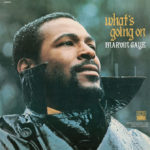
Inner City Blues
I was nineteen or twenty when I first heard What’s Going On. I remember checking it out from the library and playing the title track and “Mercy Mercy Me” over and over and over again. I was literate enough at the time to understand that this album was important — that it marked some kind of radical departure from the earlier, “Heard It Through the Grapevine”-style pop that Gaye was known for. (I think this was the same period when I was listening to the first box set of Stax singles — my teenaged “soul” period, I guess you could call it.) But at the time, the only opinion I would have offered up with any confidence was that “What’s Going On” and “Mercy Mercy Me” were two of the most beautiful songs I’d ever heard. They still are. Obviously.
I suspect that “Inner City Blues” didn’t hit me with the same force then for two reasons. The first goes back to a complaint I’ve heard my dad make fifty or sixty times over the years: “When’s that chord gonna change?” (I heard it most recently a few weeks ago, when I played for him Radiohead’s “Everything In Its Right Place,” followed by Brad Mehldau’s version, both of which left him underwhelmed.) When I was nineteen or twenty, I was playing piano several hours a day — practicing at home and playing in a community big band, all in preparation for what turned out to be a remarkably short and unsuccessful stint in music school. I was taking theory and music history courses, discovering Bartok and Stravinsky and Debussy, and trying, for the first and only time in my life, to “be a composer.” Which is to say that I could appreciate the songwriting of “What’s Going On” and “Mercy Mercy Me” like I was learning to appreciate Gershwin, Basie, Ellington, and Satie.
If I’m remembering theory notation correctly, the change for “Inner City Blues” is i-IV. Two chords. It opens with twenty-four straight measures of the minor root before finally changing to the major IV, where it stays for all of four measures before returning to the root. Would have bored me senseless a decade ago; now, I’ll be damned if that change ain’t transcendent. The song is a chant-like, soul-filled lamentation. An angry prayer.
The other reason I’m dumb-struck by this song right now is because I’ve been reading Mark Kurlansky’s 1968: The Year that Rocked the World, a social history of the period out of which What’s Going On was born. I’ve spent most of the last year reading and writing about the late-1960s and early-1970s, an era the twenty-year-old version of myself ignorantly dismissed as a distant history populated by hopelessly naive hippies who happened, from time to time, to produce some decent music. I knew about the war and the Movement and the assassinations, but I didn’t understand the anger. The anger is all over What’s Going On, and it’s in constant tension with all that beauty. That’s what I didn’t get the first time, and that’s what makes “Inner City Blues” the perfect final note to a perfect album.
-

Silence (and a New Mix)
The following is my first contribution to a mix CD swap that was organized by some friends. If you want a copy, send me your mailing address. I’d love to get a mix in return, but it’s not required.
I had two main goals with this mix. First, I decided to divide it evenly between older and newer music. There’s always a jump of at least 15 years from tune to tune. But I also wanted the mix to be coherent, so I was looking for a tone that could maybe be described as “Songs that might actually sound better if they were played on an old, hissing record player.”
Actually, I guess I also had a third goal: Like a Wes Anderson or Cameron Crowe soundtrack, I wanted to see if a good mix could help rediscover some kitsch-free relevance in “classic rock.” At one point, I gave myself the challenge of successfully integrating a Permanent Waves-era Rush song. No luck. The one song that didn’t make the final cut but that I really wanted to include is Hall and Oates’ “Sarah Smiles,” which, imo, is one of the most beautiful pop songs of the last thirty years.
- “Silence” by The Autumn Defense
- “Back of a Car” by Big Star
- “So It Goes” by Anders Parker
- “Bridge Over Troubled Waters” (S&G cover) by Aretha Franklin
- “The Eyes of Sarah Jane” by The Jayhawks
- “Rock ‘n’ Roll Suicide” by David Bowie
- “I Will Internalize” by Martha Wainwright
- “Amelia” by Joni Mitchell
- “Nowhere Near” by Yo La Tengo
- “Ibiza Bar” by Pink Floyd
- “Bathtime” by Tindersticks
- “Generation Landslide” by Alice Cooper
- “Southern Belle” by Elliott Smith
- “Into White” by Cat Stevens
- “Great Waves” by Dirty Three with Cat Power
- “Ten Years Gone” by Led Zeppelin
- “Jesus Christ Was an Only Child” by Sun Kil Moon
- “Girl from the North Country” by Bob Dylan
- “The Shadowlands” by Ryan Adams
-
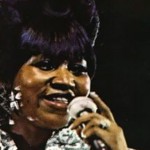
Everything is Copasetic, Now
At Girish’s request, I’ve pasted together a mix of music that features the Fender Rhodes. If you want a copy, send me your snail mail address. (For the record, I’m going by ear here, so it’s possible that what I’m hearing on a few of these tracks is actually a Wurlitzer. Liner notes are surprisingly useless in this regard.)
- “She’s Gone” by Hall and Oates
- “Celebration Suite, Pt. 2” by Return to Forever
- “Niki Hoeky” by Aretha Franklin
- “Two Trains” by Little Feat
- “No Quarter” by Led Zeppelin
- “Captain Fantastic and the Brown Dirt Cowboy” by Elton John
- “Nanook Rubs It” by Frank Zappa
- “Living for the City” by Stevie Wonder
- “Humdrum” by Peter Gabriel
- “Fainting in Coils” by Bruford
- “Babylon Sisters” by Steely Dan
- “Midnight Rider” by Gregg Allman
- “Breakdown” by Tom Petty and the Heartbreakers
- “Do You Feel Like We Do” by Peter Frampton
- “Tombigbee” by Tori Amos
- “Nowhere Again” by The Secret Machines
It’s a fairly eclectic mix, I think. I did my best to pull from several genres:
Pop: “She’s Gone” and “Breakdown” have been played to death over the years, but they’re still perfect pop songs. (“Sarah Smiles” is even better, but, alas, no Rhodes.) “Captain Fantastic and the Brown Dirt Cowboy,” as I’ve said before, is a not-too-guilty favorite.
Classic Rock: It’s hard to be a piano player when you really want to be a rock star. John Paul Jones’s electric piano on “No Quarter” is almost as cool as Jimmy Page’s Gibson. I put “Do You Feel Like We Do” at the end of the CD so you can skip it more easily, but I really do love Bob Mayo’s solo (around the 4 minute mark).
Southern Rock: This version of “Midnight Rider” is from one of Gregg Allman’s solo albums, with Chuck Leavell’s keyboard covering the Dickie Betts parts. “Two Trains” is among Lowell George’s best songs. And Billy Payne’s playing is typically tasteful.
Progressive/Fusion: I limited myself to two tracks in this genre, knowing that few people share my love of 70s fusion and progressive rock. Bill Bruford (of Yes and King Crimson fame) had a great band in the late-70s that featured Jeff Berlin, Allan Holdsworth, and Dave Stewart. Stewart’s playing on “Fainting in Coils” is inspiring. Return to Forever was a fusion supergroup, with Chick Corea, Stanley Clarke, Al DiMeola, and Lenny White joining up for the album No Mystery. That’s where I grabbed “Celebration Suite, Pt. 2.”
Soul: I was tempted to include Aretha’s cover of “Eleanor Rigby” from Live at the Fillmore West, but went with “Niki Hoeky” instead, if for no other reason than to hear her sing the line that gives this post its title. The Rhodes makes Aretha’s rhythm section. Stevie Wonder tended to use the Rhodes for his sweeter, more melodic pop songs; his funkier tunes, like “Higher Ground” and “Superstition,” were all about the Clavinet. “Living for the City” meets those two styles somewhere in the middle.
Hard to Classify: No one shows off the melodic possibilities of the Rhodes like Donald Fagen. “Babylon Sisters” is one of about twenty Steely Dan songs that could have made the mix. “Humdrum,” from Peter Gabriel’s first solo album, is just a beautiful, beautiful song. And Zappa . . . well, “Nanook Rubs It” is great fun, and you get George Duke on keyboards, to boot.
Epilogue: I had planned to choose only songs that were recorded from, say, 1968 to 1978 but decided to throw in two songs by current acts that are using vintage keyboards. Tori Amos brought along a couple on her last tour (see the Welcome to Sunny Florida concert DVD) and used what appears to be an 88-key Rhodes on “Tombigbee.” I don’t own The Secret Machines album, but I stopped in my tracks every time I caught the video for “Nowhere Again” on MTV. Brandon Curtis’s Rhodes is filtered, fuzzed, and distorted beyond recognition, and god bless him for it.
-
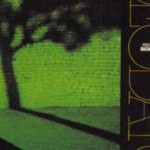
Also Sprach Zarathustra
Sub-title: In Praise of the Fender Rhodes
In 1972, Eumir Deodato’s funked and fused arrangement of Richard Strauss’s “Also Sprach Zarathustra” reached number 2 on the American charts and earned him a Grammy for Best Pop Instrumental Performance. (It also, I assume, earned him a commitment to playing the song as an encore every. single. night. of. his. life.)
I only know of Deodato because of Being There (1979). Hal Ashby drops his needle on “Zarathustra” during the long sequence near the beginning of the film when Chance leaves his now-dead employer’s estate and wanders, umbrella and suitcase in hand, through the streets of Washington, D.C. Ashby has impeccable taste in music — most famously the Cat Stevens songs throughout Harold and Maude and Tim Buckley’s “Once I Was” at the end of Coming Home — but the Deodato cue might be my favorite. It’s a perfect pairing with Jerzy Kosinski’s story, all allegory and irony and self-reflexive allusion. Plus — I’ll admit it — I really like the song.
Girish and I have already decided that, if we need a break from movies next month, we’re going to explore the music shops around downtown Toronto. (Suggestions?) I’m unofficially in the market for a vintage Fender Rhodes. I’m flexible regarding the model, though an early 73-key Mark I would be my first choice. All that matters to me, really, is that it has the sound and feel of the electric pianos played on so many great recordings of the early-1970s.
I’ve been tempted to buy a new keyboard — something with weighted keys and a large stash of pre-loaded sounds. It would be more flexible, certainly, and could lay the groundwork for some home recording. I’ve gone so far as to spend hours and hours at the local Guitar Center, auditioning, researching, asking questions. But when I’m there, I almost always sit down, click through to the Fender Rhodes sounds, and annoy the hell out of Joanna by playing Steely Dan songs. (“The Dan” is a running joke in our house. We once heard “FM” during four consecutive trips to the grocery store. The look on Joanna’s face when she mocks Donald Fagen’s lisp — “No thtatic at all” — is one of the many reasons I love her.)
So I think I might just get an old Rhodes, which, really, is the greatest instrument ever, after all. Without the Rhodes there’d be no epic intro to Pink Floyd’s “Sheep,” the opening chords of “Deacon Blue” would be utterly forgettable (rather than transcendent — which they ARE), Jeff Beck’s “Cause We’ve Ended as Lovers” would be just one more guitar player showing off his volume pedal, and Peter Frampton would never have uttered the words, “Bob Mayo on keyboards! Bob Mayo!” And I haven’t even mentioned Chick Corea, Herbie Hancock, Billy Payne, Stevie Wonder, Joe Zawinul, or, like, every keyboard player who recorded with Jerry Wexler at Atlantic in the late-’60s and early-70s. (I’ve been playing the hell out of Aretha Franklin’s Lady Soul this week.)
So there you go. Granted, Deodato’s “Zarathustra” has the faint smell of cheese, but try to enjoy it with as little irony as possible.
-

A Good Man is Hard to Find
Sufjan Stevens’ recent performance on Morning Becomes Eclectic is now available in streaming video. It’s a fantastic set. Three of the songs, “Casimir Pulaski Day,” “John Wayne Gacy, Jr.,” and “A Good Man is Hard to Find,” are on my “please, Sufjan, please play these when I see you in September” list. They’re also on my short list of the greatest hymns of the last century.
Lyrics:
- Casimir Pulaski Day
- The Man of Metropolis Steals Our Hearts
- Chicago
- John Wayne Gacy, Jr.
- A Good Man is Hard to Find
- Jacksonville
Update: Welcome to the Midwest has converted the Morning Becomes Eclectic show to mp3s. Is it odd that I started crying when I first heard this live version of “A Good Man is Hard to Find“? Consider it an unoffical Song of the Moment. Tomorrow morning I’m headed to Illinois, of all places.
-
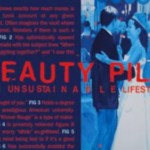
Goodnight for Real
Several weeks ago, a friend sent me an email and suggested that I check out Beauty Pill. After digging through their website and downloading some mp3s, I ordered The Unsustainable Lifestyle, their first full-length release, along with their two EPs, You Are Right to be Afraid and Cigarette Girl from the Future. All in all, a helluva a bargain for $22 shipped.
Anyway, I’ve listened to almost nothing else since the discs arrived. In a relatively short time — five years or so — Beauty Pill has gone through a few members, and with a couple singers and songwriters in the band there is a surprising amount of variety on display. The Song of the Moment, “Goodnight For Real” is representative only in that it features clever lyrics, solid playing (including some fun synth parts), and a really catchy chorus. Enjoy.
-

Ten Years Gone (and other things)
I’m afraid that Long Pauses is fast becoming an outlet for end-of-the-week rambles, written while I drink away a Friday afternoon. The following is an incomplete list of topics I would cover at much greater length and with much greater insight given the time, energy, and inclination.
Radical Liberalism. I’ve spent all day, every day this week sitting in the library, chugging through my Norman Mailer chapter. In the true spirit of “writing as discovery,” I’ve realized in the last day or two that my chapter is really about trying to define the term “New Left,” which is actually a good bit more difficult than you might imagine. One of the Right’s great rhetorical victories over the last three decades, I think, is their collapsing of fifteen years of socio-political history (roughly 1960-1975) down to a single pejorative. “New Left” has become synonymous with the countercultural excesses and lame pseudo-Maoist ramblings of the late-60s and early-70s. I’m trying to complicate that (as they say in the trade) by reading the larger narrative of the Cold War Left and by looking more closely at the various stages of the life (and death) of the New Left.
Two years ago, when I first pitched my dissertation idea to a faculty member in hopes that she would agree to join my committee, she listened patiently as I rambled and rambled, then she interrupted me to ask, “Okay, so what’s the point?” I told her the truth — that I had no idea what my point was but that I hoped to find my own politics during the writing process. Dramatic pause. “Great,” she said. “Your project will have a voice. Count me in.”
I can’t say that I’ve necessarily found my politics yet, but I’ve been pleasantly surprised to discover much that is worth salvaging amongst the wreckage of the New Left, especially among the group of intellectuals who, through their work in the 1950s, were instrumental in shaping the theories of the Free Speech Movement and the early ventures of Students for a Democratic Society. In that regard, Kevin Mattson’s book, Intellectuals in Action: The Origins of the New Left and Radical Liberalism, 1945-1970, has been a great resource, and I can’t recommend it highly enough. I’ve been using it to the point of plagiarism.
Summer Reading. I would also probably write about this article in which Michael Chabon describes the months he spent sitting in a crawlspace, producing what would eventually become his first novel, The Mysteries of Pittsburgh. I haven’t read Pittsburgh since, oh, 1994 or so, but, coincidentally, it’s been on my mind lately. As have Philip Roth’s Goodbye, Columbus and Fitzgerald’s The Great Gatsby, both of which Chabon mentions as direct inspirations. Actually, I knew they were his inspirations already. He and I talked about it when I was writing my Master’s thesis — and by “talked” I mean “exchanged emails for a week or two.”
The main reason I’ve been thinking about Pittsburgh and Columbus is that my summer is settling into a pleasant but oddly-disciplined routine. I get to the library at 8:30 and spend an hour or so drinking coffee while checking email and reading blogs. At 9:30 I reread everything I’ve already written and spend 30 minutes or so editing. At 10, a woman sits down at the table four chairs to my left (did I mention I always sit in the same place?), and she studies there while I write. Just before noon, we both get up and leave. I take a walk and get some lunch. I don’t know where she goes. After lunch I grab a cup of coffee, return to my table on the 4th floor, and write until 4:30.
As Chabon mentions in that piece, both his and Roth’s novels (and Fitzgerald’s) are built around a simple, 3-act structure: June, July, August. Both also feature protagonists who work in a library. Get the connection? Sidebar: I’m about to begin rereading E.L. Doctorow’s Book of Daniel, which features a protagonist who is trying to complete his doctoral dissertation, a study of the Cold War Left.
Life. Art. Life. Art. My daughter. My sister. My daughter. My sister.
Oops. Beer’s empty.
Trouble Every Day. I would definitely write about Claire Denis’s film, which I watched for the first time a few days ago and which was every bit as beautiful and every bit as disturbing as I expected. (See new title image.) In the process, I would also unleash a breathless diatribe against the shameful lack of curiosity that characterizes so much of American culture, from the White House — and especially the White House — on down. I would rant about Bush’s sickly, starved imagination and about evangelicalism’s fear of metaphors, and it would all be inspired by Mick LaSalle’s mind-numbing review of Trouble Every Day in the San Francisco Chronicle. Stuff like this wouldn’t piss me off nearly so much if critical response didn’t directly impact our ability to see these films. Is it any wonder that L’Intrus, the best new film I saw last year, can’t find American distribution when a critic for the major newspaper of America’s most progressive city won’t give even five minutes of thought to Denis’s work?
The Song of the Moment. A week or two ago I had one of those “sit down cross-legged in front of the CD collection and pull out stuff you haven’t listened to for years” kind of nights. Without really meaning to, I found myself distracted by a mood. Every song I cued up would have sounded better coming out of a record — you know, with the breath and hiss and pops of a turntable. They also would have sounded better coming out of a car stereo, if the car were being driven with the windows down on a warm spring evening. I’m still thinking of putting together a mix CD. Let me know if you’re interested.
“Ten Years Gone” was the first song I hit that made me turn out the lights and close my eyes. What I really wanted to listen to, I discovered, was side 3 of Physicial Graffiti. (I had to make do with “disc 2.”) I love how Bonham drives that album by always staying at the very back of the beat. His drum fills actually make me anxious. I always worry that he won’t get there in time.
And Other Stuff. Like how excited I am about the prospect of buying new Sufjan Stevens and Pernice Brothers albums in the next few weeks. And how much I enjoyed Jim Jarmusch’s Stranger than Paradise, which I also saw for the first time this week. And how it feels to live without a kitchen for going-on-six-weeks-now because the contractor and subcontractors are having issues. And how that damn wooden chair at the library is giving my back fits.
And so on.
-
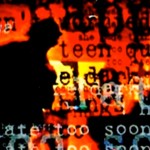
Safeway Cart
Beau Travail is a perfect film, and one of the many reasons it is perfect is Claire Denis’s uncanny knack for discovering moments of transcendence with music. Watching the film again last night, I found myself daydreaming about Denis’s record collection, imagining myself in her home, sitting silently as she cues up songs and conjures visions in words. Beau Travail does that to me.
Denis includes snippets from Benjamin Britten’s opera, Billy Budd, which is only fitting given that the film is a loose adaptation of Melville’s novella. I’m not familiar with the piece, but its dissonant chorus reminds me of the bits of Ligeti that Kubrick uses in 2001. She contrasts the high drama of Britten with 90s dance music and manages to find the beauty in it as well. I’ve spent too much of this morning watching over and over again the film’s final sequence, a brilliant fantasy — well, I call it a “fantasy,” but it’s one of those moments that exists in some magical, subjective space just outside of Denis’s main narrative — a fantasy in which Denis Lavant unleashes a savage but impossibly graceful dance to the sound of Corona’s “The Rhythm of the Night.” Somehow, in this context, the otherwise banal lyrics find some poetry. It’s really a remarkable scene.
The new Song of the Moment, Neil Young’s “Safeway Cart,” scores a scene in which the Legionnaires march through a rocky desert, one of their many meaningless exercises in the film. It plays like a dirge and is one of Beau Travail‘s few explicit references to the Christian allegory at play.
Like a Safeway cart rolling down the street
Like a sandal mark on the Savior’s feet
Just keep rolling on it’s a ghetto dawn
Baby looks so bad with her TV eyes
Going, going, gone and the picture cries
It’s a ghetto dawn
Baby looks so bad with her TV eyes
Going, going, gone and the picture cries
Baby looks so bad with her TV eyes
Like a Safeway cart rolling down the street
Past the Handy mart to the Savior’s feet
Going, going, gone and the picture cries
Baby looks so sad
Baby looks so bad
It’s a ghetto dawn
Like a Safeway cart rolling down the street
Like a sandal mark on the Savior’s feet
Just keep rolling on to a ghetto dawn -

Missing
File this one away under “Too Much Information.” I just spent the last two hours in my basement, listening to Beck’s Guero, reading a book called Fables of Fact: The New Journalism as New Fiction, and shaking my ass. I stopped dancing the day I stopped smoking pot, which was quite a while ago. Like, in the early-90s. Not that that thing I would do while standing next to 500 other people at a Widespread Panic show could properly be called “dancing.” It was more of close your eyes, shake your head, and rock on both knees kind of thing. But you get my point.
So, tonight I spent two hours reading . . . while dancing . . . kind of. Which is a pretty odd thing to find oneself doing, I can promise you. And quite unexpected. Which says something for the ass-shakingness of Guero. There are some nice Sea Change-like melodies here, but this album is all about the beats. So much so, in fact, that it feels like the Dust Brothers are due for a co-credit or something. Anyway, “Missing” won Song of the Moment honors in a close race with “Black Tambourine” and “Hell Yes,” both of which, it must be said, are even more ass-shaking than “Missing” but not quite as perfect. All three sound even better in multi-channel.
-
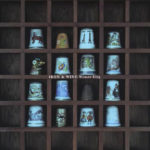
Evening on the Ground
Joanna and I just made what we hope will be the last of many recent trips to southern Alabama. It was another rough one — the type of experience that is supposed to give us “closure.” Everytime someone says that to me (and always with the best intentions, I know), I think of Philip Roth’s The Human Stain. I never got around to seeing the film, so I’m not sure if this made it into the screenplay, but Coleman Silk’s rant about the language of Monicagate-era America has stuck with me longer than anything else from the novel:
Their whole language is a summation of the stupidity of the last forty years. Closure. There’s one. My students cannot stay in that place where thinking must occur. Closure! They fix on the conventionalized narrative, with its beginning, middle, and end — every experience, no matter how ambiguous, no matter how knotty or mysterious, must lend itself to this normalizing, conventionalizing, anchorman cliche. Any kid who says “closure” I flunk. They want closure, there’s their closure.
Of course, none of that has anything to do with “Evening on the Ground,” the Song of the Moment, except that, on the way out of town, I picked up Woman King, the new Iron and Wine EP, and Joanna and I listened to it over and over again during the drive. Jo has this habit of replaying and replaying songs that hit her. Usually, I get annoyed in no time, but “Evening on the Ground” — the sound of it more than the lyrics, and that unexpected distorted guitar most of all — seemed to suit our mood.
-

Riff Raff
The Song of the Moment was supposed to be Mark Kozelek’s version of “Riff Raff” from What’s Next to the Moon, his album of Bon Scott-era AC/DC covers. Something in that combination of Kozelek’s voice and his tasteful acoustic guitar arrangements unearths the roots in AC/DC’s rock. That album is borderline bluegrass–not the arrangements or the instrumentation, but the high lonesome sound.
At some point I became too hip to listen to beer-drinking, head-shaking rock music, and I think that’s a bad thing. When I was in high school, my best friends were in a band, and I spent most of my weekends tagging along to their gigs or hanging out in the drummer’s basement, singing along as they fine-tuned their covers of “War Pigs” and “The Immigrant Song.” The singer couldn’t find a melody to save his life, but he had an uncanny falsetto, and when you’re a 17 year old singing to a bar full of South Baltimore rednecks (and I say that with great tenderness for South Baltimore rednecks), your ability to find the right note is significantly less important than your ability to warble like Ozzy.
I just sat and watched, mostly. Always the hanger-on. They already had a keyboard player, and he was always better than I was. He played at the Kennedy Center last week.
But anyway. Riff raff. Ain’t it good for a laugh?
-

Strange Waters
Bruce Cockburn’s “Strange Waters” has been something of a theme song for me this year:
I’ve seen a high cairn kissed by holy wind
Seen a mirror pool cut by golden fins
Seen alleys where they hide the truth of cities
The mad whose blessing you must accept without pityI’ve stood in airports guarded glass and chrome
Walked rifled roads and landmined loam
Seen a forest in flames right down to the road
Burned in love till I’ve seen my heart explodeYou’ve been leading me
Beside strange watersAcross the concrete fields of man
Sun ray like a camera pans
Some will run and some will stand
Everything is bullshit but the open handYou’ve been leading me
Beside strange waters
Streams of beautiful lights in the night
But where is my pastureland in these dark valleys?
If I loose my grip, will I take flight?You’ve been leading me
Beside strange waters
Streams of beautiful lights in the night
But where is my pastureland in these dark valleys?
If I loose my grip, will I take flight?I asked Bruce about “Strange Waters” yesterday, and his answer was a tense, beautiful sermon. In order to read the full interview, though, you’ll need a subscription to Beyond magazine, the sweetest slice of ads-free goodness you’ll ever taste. And I’m here to help. Same rules apply. The first ten people who post “I want to taste the goodness” in the comments section of this post get a free subscription on my dime. Be sure to use your real name and email address, because I’ll need to contact you with additional information.
-

God Rest His Soul
iTunes just landed on “God Rest His Soul” by The 31st of February, which was a happy coincidence given the content of yesterday’s post. Recorded in 1968, it’s a beautiful prayer for Martin Luther King, Jr., sung by Greg Allman of all people.
-
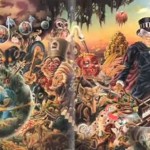
Captain Fantastic and the Brown Dirt Cowboy
Yeah, I know. There’s nothing less hip than Elton John, but while walking through Toronto last month, my iPod randomly landed on “Captain Fantastic and the Brown Dirt Cowboy,” and it was, at that moment, the single greatest song I had ever heard. Context is everything, I guess. The chorus is too sing-songy for my tastes, but I love the chord changes through the verses. I have this thing for songs that move directly from a major chord to a minor form of the same chord. I wonder how Elton would be remembered today if he hadn’t written another song after, say, 1976.
-

La Villa Strangiato
When I was eight years old I was hanging out in my friend Dave Bourquin’s bedroom when his brother, Robbie, barged in to play his new album on Dave’s record player. Robbie was much older (12) and much cooler than I was, and I wanted nothing more than to be just like Robbie.
“Listen to this song,” he told us. “It’s the coolest.” Robbie was something of an authority on such things, and so I listened. Intently. Sitting stone upright on Dave’s bed. And Robbie was right. It was most definitely the coolest. This wicked keyboard sound introduced a simple, shuffling drumline. “A modern day warrior, mean, mean stride. Today’s Tom Sawyer, mean, mean pride.” And then more keyboards and drums and bass and guitars and noise, and then the song ended and Robbie picked up the stereo’s tone arm and dropped the needle on the outer edge of the record, and we listened to the same song again and again. All afternoon.
So I went home, and, as I recall it, I told my Mom that the next time she went to the Severna Park mall she should stop by Sound Odyssey and pick me up a copy of Rush’s new album, Moving Pictures, because Rush was the coolest band ever and “Tom Sawyer” was the coolest song ever and because I was now into rock music. Seriously. And for some reason, she did. Sort of. Actually, she bought Fly by Night, which, in hindsight, was the more reasonable choice. I mean, if I had a precocious eight-year-old son who told me to buy him a Rush album, I’d probably get the one with the pretty owl on the cover, too. (Actually, I probably would have laughed and told him to get a job, but that’s why I’m not a parent.) Have you looked at the cover of Moving Pictures lately? To borrow from Slater’s description of the one dollar bill in Dazed and Confused, “There’s some freaky shit going on in there.”
So Mom bought me Fly by Night, and, of course, I pouted because, well, because “Tom Sawyer” was nowhere to be found on Fly by Night and, I mean, who listens to Fly by Night anyway? Cool third graders don’t, that’s for sure. Cool third graders listen to Moving Pictures, and so — get this — I convinced her to go back to Sound Odyssey and return Fly by Night in exchange for Moving Pictures. Unbelievable. She’s a saint.
Twenty-four years later I still haven’t a clue what “Tom Sawyer” is about — this despite the endless junior high discussions of how Neil Peart was the greatest lyricist in the history of rock (and the greatest drummer as well, obviously) and of how 2112, in particular, showed his debt to Ayn Rand. One of my friends — Kirby, I think — even claimed to have finished reading Atlas Shrugged out of devotion to Peart, but I could barely get through Anthem, and when I finally did get around to really reading Rand, I was old enough to know better, thank God.
But I was eight and I owned my own copy of Moving Pictures, and I played the hell out of it. Side one, at least. I played the hell out of side one of Moving Pictures, which is just about a perfect album side, you’ve gotta admit: Tom Sawyer / Red Barchetta / YYZ / Limelight. Play any one of those songs in my presence, and it’s 1980 again, and I’m just discovering the gut-churning sensation of rock music again.
And I say all of that to say this. Tomorrow morning I’ll be flying for the first time into the Toronto International Airport — also known as YYZ. And just seeing those letters, neatly capitalized, on my e-ticket sent me running to my CD collection. Moving Pictures is still a great album (even side two), but when I want to listen to Rush these days I invariably pull out Exit…Stage Left, their document of the Moving Pictures tour. And so the new Song of the Moment is the other instrumental from that great double-album — not “YYZ” but “La Villa Strangiato,” which doesn’t have a five-minute drum solo, but does have lots of cool synthesizers and some nice guitar work from Alex Lifeson. And no singing from Geddy. Which, as we all know, is a good thing.
Depending on connectivity issues, I’ll try to post daily updates from the film festival. If I can’t, expect a massive post when I return. In the meantime, keep an eye on Film Journey.
Thank you very kindly. Goodnight.
-

The Shadowlands
I would like to play piano/keyboards in a rock band, and I would like that band to sound as much as possible like Ryan Adams’ “The Shadowlands.” I would also be perfectly content if it sounded like “Political Scientist” or “English Girls Approximately” or almost any other track from Love is Hell.
-
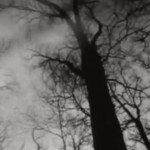
Snow
Since watching Caveh Zahedi’s In the Bathtub of the World on Sunday, I have probably listened to The Innocence Mission’s “Snow” thirty times. Hopefully I’ll find time to write about Bathtub in the next day or two. It’s been a long time since I was so moved by a film.
-

Tombigbee
Tori Amos’s new 2-disc set, Welcome to Sunny Florida, is a bargain at $14. Disc 1 is a two+ hour concert DVD featuring PCM stereo and 5.1 Dolby Digital tracks (and mediocre video); Disc 2 is a six-track music CD. I haven’t seen Tori in concert but have always wanted to, and this DVD is probably the next best thing. She performs 18 songs, which are cut together with interviews and comments from fans. Fun stuff.
“Tombigbee” is one of the new songs included on the music CD, and it’s also her first encore. I wish I knew how to rip an mp3 from the DVD’s stereo track, because this amazing song is even more amazing live. I’m a pretty good pianist. Not great, but pretty good. I’d be great if I could play in front of John Evans and Matt Chamberlain, Tori’s rhythm section. The DVD is worth watching just for them.
If you’re too hip to like Tori, do me a favor and tell me what you think of this song. It’s a nice change of pace for her. No acoustic piano. A bit of distortion. Borderline lo-fi.
-
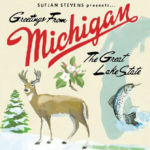
Holland
I always keep an eye on Jeffrey Overstreet’s music suggestions (Jeffrey makes a wicked mix CD, by the way), and so I recently chased some links and ended up at InSound.com, where you can download a couple mp3s from Sufjan Stevens, including “Holland.” It’s a heckuva song from Greetings from Michigan. I’ve added it and Stevens’ latest, Seven Swans, to my Amazon Wish List. Can anyone make a strong case for one album being better than the other? Any other Sufjan fans?
-

Cucurrucucu Paloma
I’ve been meaning to post this one for some time now. I’m not sure how well “Cucurrucucu Paloma” will work for those of you who haven’t seen Almodovar’s Talk to Her, but I had to buy the soundtrack for this song alone. (Alberto Iglesias’s original score is also quite beautiful.) I just can’t imagine being able to sing like Caetano Veloso. I’d never talk again.

